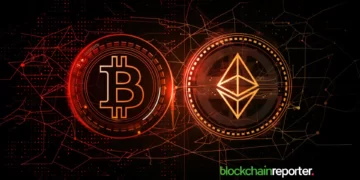Ethereum’s recent Dencun upgrade has led to significant changes within its ecosystem. As Layer 2 (L2) transactions surged following the implementation of EIP-4844, Ethereum Mainnet fees dropped to an all-time low. The upgrade, which reduced L2 costs by 10 times, has driven a considerable increase in activity across the network. Consequently, L2 transactions have reached unprecedented levels, boosting the scalability of Ethereum’s infrastructure.
EIP-4844 had the significant function of reducing the expenses of L2 transactions. It also caused a decrease in fees to force users to shift transactions from Ethereum’s Layer 1 to Layer 2. Furthermore, this transition has increased network participation specific to Optimism, Arbitrum, and Base among the most visited L2s. However, this fee reduction has led to a drastic change in Ethereum’s L1 transaction fees, changing the nature of the fee structure within the platform.
Ethereum Faces Inflationary Pressure After Fee Drop
As per the data shared by IntoTheBlock, Ethereum’s Mainnet fee has decreased recently, although the network’s activity grew. Ethereum experienced a reversal of deflationary forces because fees were lower, and continuously added supply pressure complicated its adoption.
Increased L2 Transactions and Future Implications
The post-Dencun surge in L2 transactions signifies the growing adoption of L2 solutions to enhance Ethereum’s scalability and efficiency. However, the rise in L2 activity, coupled with lower fees on the Mainnet, has triggered supply-side inflation for $ETH. The increased supply may affect the broader Ethereum ecosystem as it adjusts to these new economic dynamics.
At the time of writing, $ETH is trading at $2,452 showing a brief dip but then steadily surged by 1.36% in the past 24 hours. The 24-hour trading volume stands at $8.05 billion, indicating active trading despite a 16.85% decrease compared to the previous period and a market cap reaching $294.7 billion.























